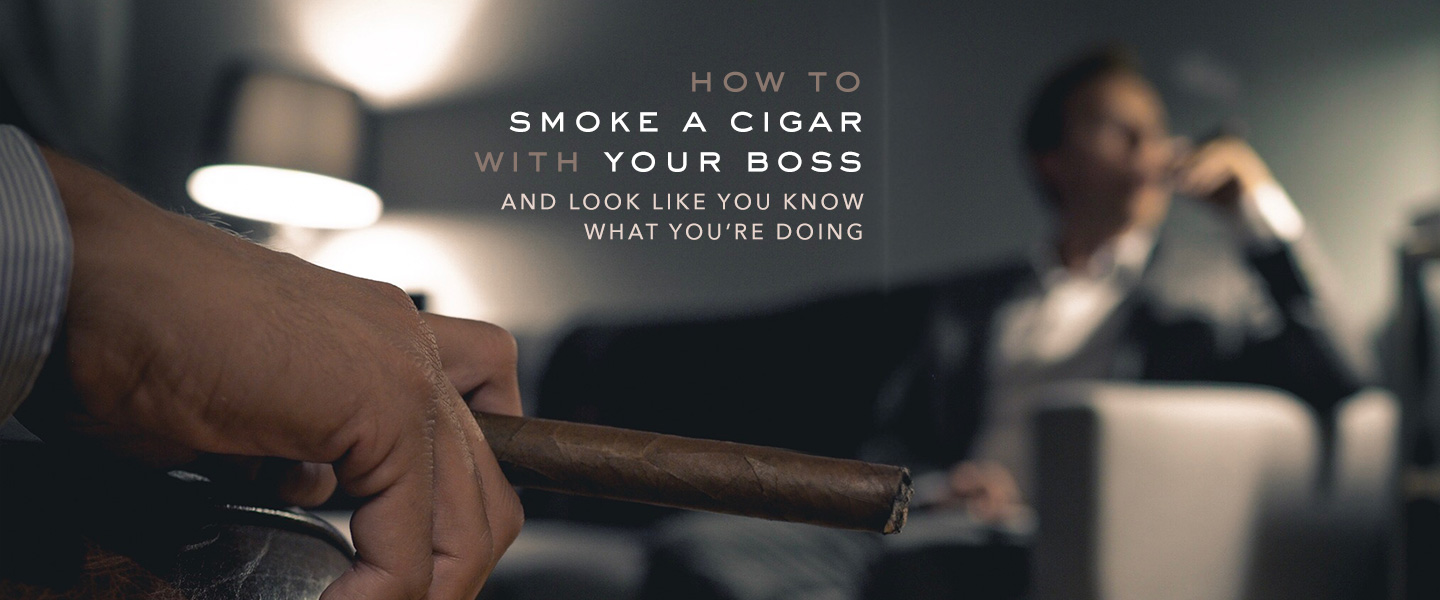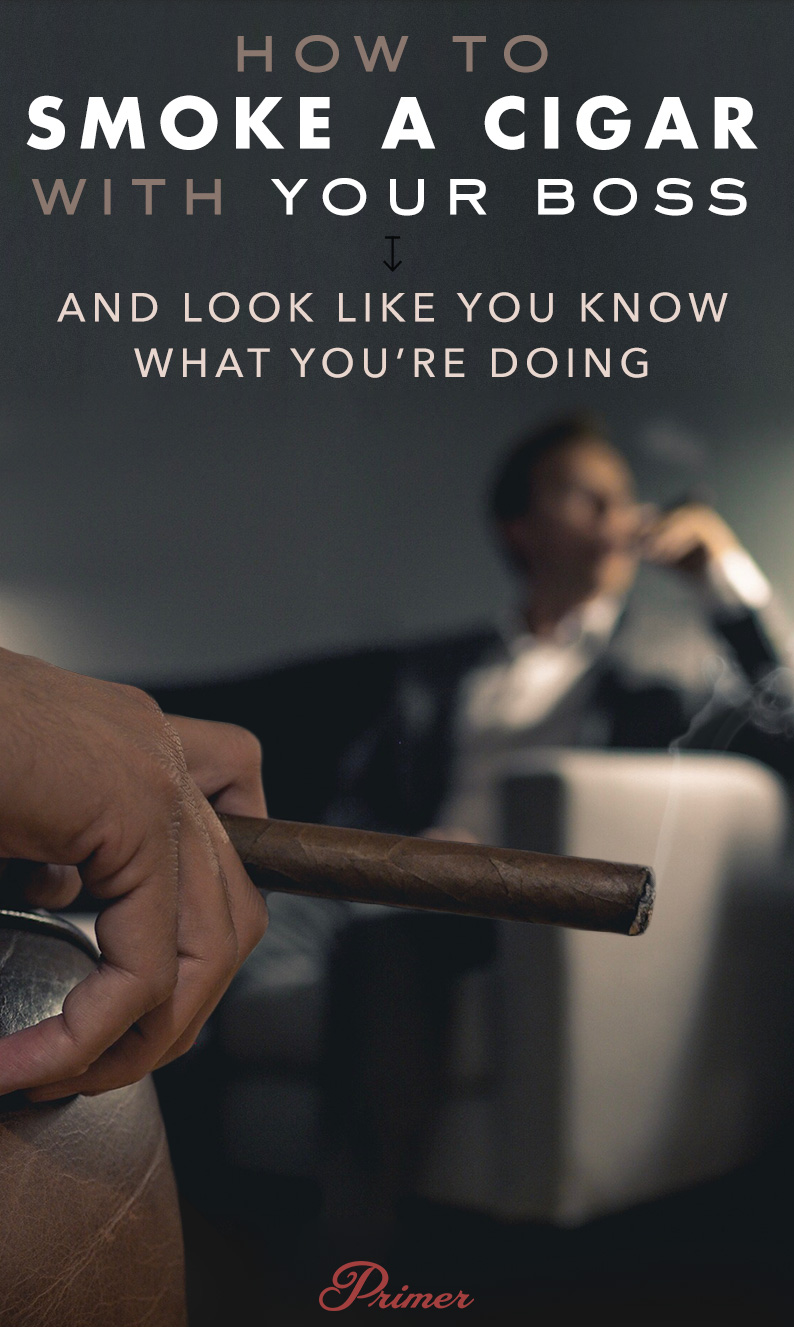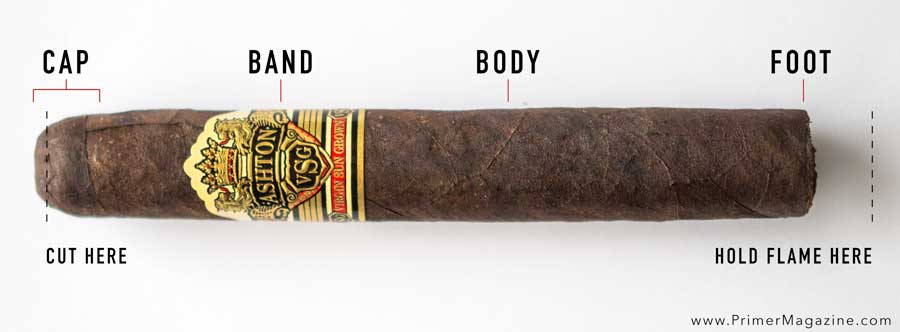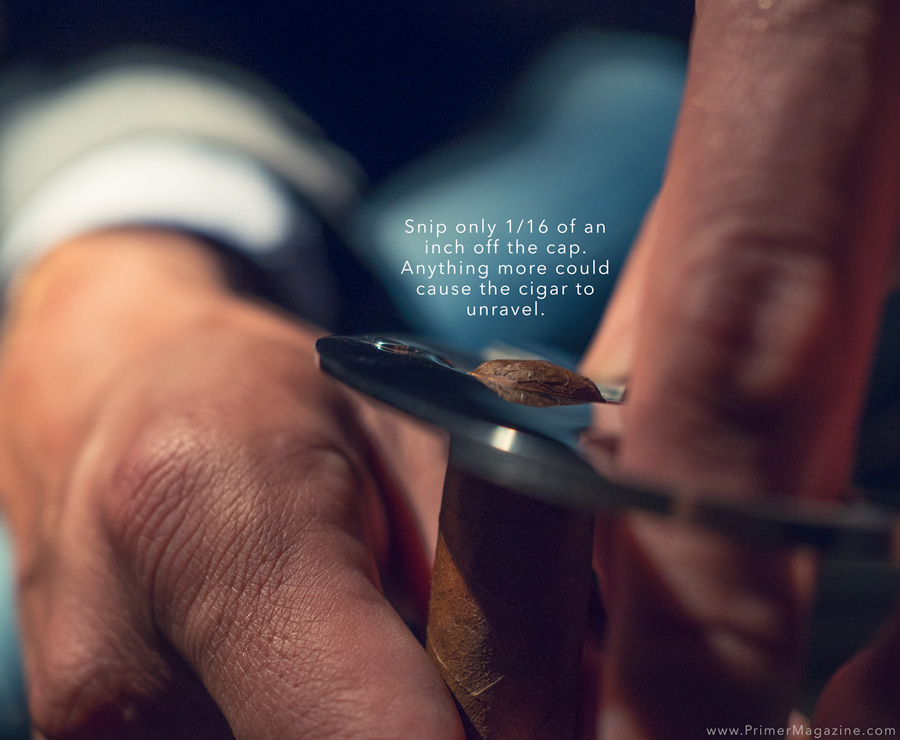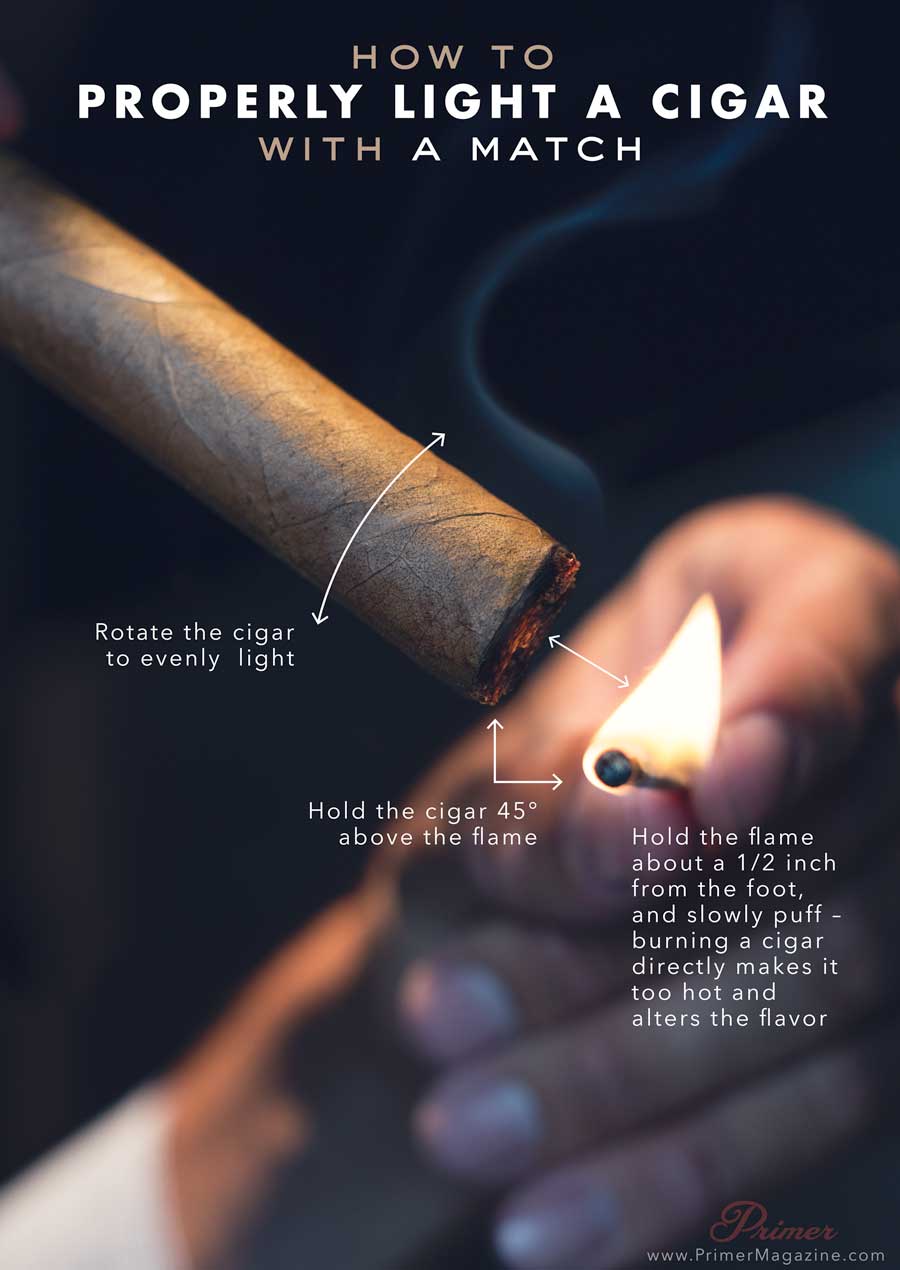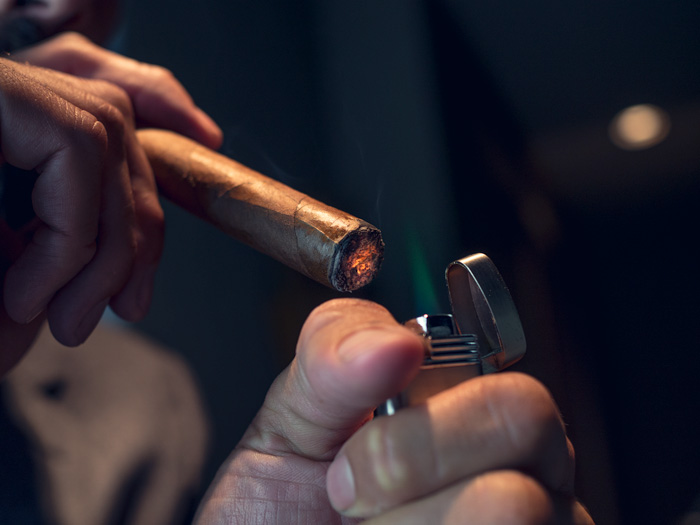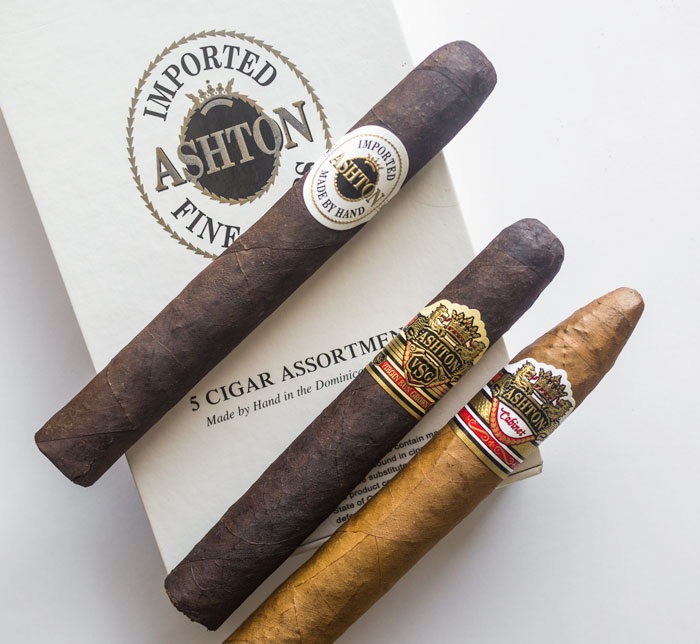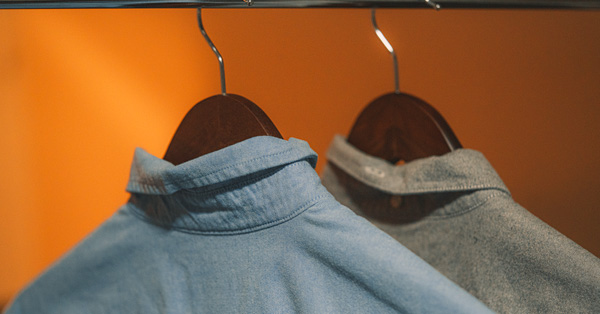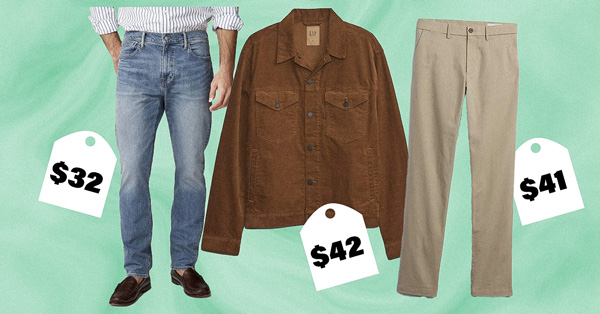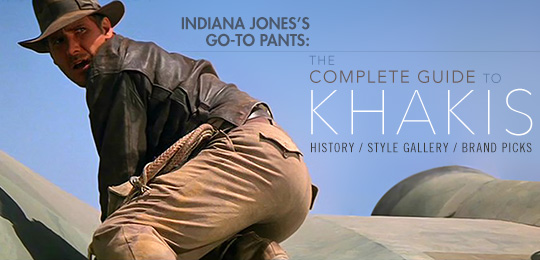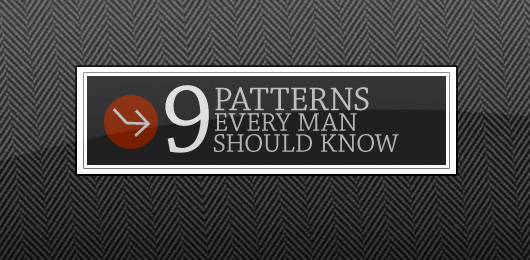Imagine you’re at an out of town conference, or an after-work event and your boss invites you to hang out afterwards – a great opportunity to do some one-on-one or small group bonding and cement your personal connection to The Big Guy (or Gal).
Your boss is into cigars and suggests one of his favorite tobacconists for drinks and cigars. There’s just one problem:
You don’t smoke. And because you’re not a 1920s bootlegger or Fidel Castro, you’ve never touched a stogie.
Fear not. This guide contains everything you need to know to identify, prepare, and enjoy the smoking of your first real cigar.
And we’ll take you a step further, revealing first-timer mistakes to avoid, and a revolutionary formula for pairing alcohol and cigars based on the chemistry of taste that is guaranteed to impress any cigar aficionado.
If you’re new to cigars and in a rush, check out the mild strength samplers from Holt’s Cigar Company for a quality, affordable place to start. Primer readers can use coupon code PRIMER at checkout for 10% off.
Cigars: Not Just Over-Sized Cigarettes
If you’re like me, you lump cigars and cigarettes into basically the same category: smokable, tobacco-filled sticks. If you’re like me, you’d be wrong.
I spoke with Mason Foster, a Certified Tobacconist and head of the cigar program at the Four Seasons Hotel in Washington D.C., a town with a lot of well-heeled men and women enjoying a lot of cigars.
“There are many, many differences between cigars and cigarettes,” said Mason. “Firstly, they’re different types of tobacco.” The type of leaf found in cigarettes is highly acidic while cigars are more alkaline, which is the natural state of tobacco.
Second, you smoke a cigar by filling your mouth with the smoke, tasting it, and exhaling, while cigarettes are meant to be inhaled.
Cigar Basics: Origin
The vast majority of cigars are not produced in Cuba. As Mason informed me, Castro’s revolution in the 1950s ushered in the nationalization of the tobacco industry and a rather onerous tax that saw the Cuban government take 50% of cigar-makers’ profits. All but the most persistent cigar makers shuttered. It turns out communism is bad for business – who knew!
As a result, Honduras, the Dominican Republic, and Nicaragua are the 3 tobacco powerhouses nowadays and supply the vast majority of the world’s fine cigars.
Size
I didn’t realize this but cigar categories are named for their size, with Robusto the smallest and Gigante, predictably, the largest.
The most common cigar sizes are Corona, Toro, and Churchill.
Generally speaking, larger cigars have more elaborate tobacco blends and greater potential for complexity, depth and aging. Size also can equate to a milder cigar – good for beginners – but this isn’t always the case.
It is, however, often true that smaller cigars are stronger, more intense, with less depth of flavor. For a middle of the road approach, select a medium-size cigar for your first one.
Body
Cigars come in 3 different bodies: mild, medium, and full. Think of body a bit like proof, flavor, and origin in alcohol all rolled into one quality. In a cigar, body is a composite quality made up of flavor, depth, texture, smokiness, and aftertaste. More body equals a cigar with more presence, but also a stronger impact on your palate. For beginners, a mild-bodied cigar is a good bet.
Build
Cigars are, quite simply, tobacco wrapped in more tobacco. But at least three different types of tobacco are used: a) the filler tobacco at the center, b) a binder leaf which holds the filler together and the c) outer wrapper, which is rolled around the binder.
In the filler, “ligero” leaves (which provide power) are blended with “seco” leaves with a milder flavor and “volado” leaves which helps to ensure an even burn.
How to Choose Your First Cigar Ever
There’s a popular idea floating around that darker cigars have a bigger body and fuller flavor while lighter cigars are more mild. This isn’t necessarily true, and trying to pick on this criteria alone could get you into trouble.
The best bet: be upfront with the tobacconist about being new to cigars and what you’re looking for.
“Going into a tobacconist and saying, ‘I’m looking for a mild, medium-sized cigar’ is already giving them more information than the average guy walking in off the street,” says Mason. For an added bit of context, “start by asking for something creamy and smooth,” he recommends. Check out the Ashton Cabinet Selection #6 from Holt’s Cigar Company for a top-notch first experience.
For your second cigar, Mason suggests asking for something creamy, but not too spicy. “Spice equates to a harsh, scratching texture on the tongue and needs to get accustomed to,” he says.
A good bet is the Arturo Fuente Hemingway Series Signature, one of the most praised cigars at the Holt’s store.
If you’re feeling adventurous and want to experience some spice, Mason recommends the My Father Flor de las Antillas. “The Flor de las Antillas does play double dutch with the aspect of ‘spice,’ but does it in a calculated way, never veering too far in either direction,” he says.
How to Cut, Light, Draw, and Enjoy a Cigar
There are three steps to smoking any cigar: cutting, lighting, and drawing. Let’s break it down.
1. The object of the cut is to create an ample opening for smoking. This means cutting the head of the cigar without damaging the rest.
If you’re at a tobacconist, cigar bar, or club they’ll almost certainly have a cutter available. Use it.
With a guillotine, scissor-style, or gauge cutter, snip approximately 1/16 of an inch off of the cap so you won't damage the cigar, causing it to unravel.
2. When lighting, do not use paper matches or a fluid filled lighter. “They can impart a chemical taste that will ruin your smoking experience,” says Mason. Wooden matches and gas-filled lighters work best.
Place the cigar above and near the flame, but don’t let them touch. Burning a cigar directly in a flame makes it too hot. Rotate the cigar so all parts of the tip are equally heated. Be patient until the complete end of the cigar is glowing.
3. You’re ready to draw. Raise the cigar to your mouth and take the first puff with assistance from your lighter or match as needed.
Wait 30-60 seconds in between puffs to give the cigar a chance to cool. It can become bitter if it gets too hot.
Drink Pairings: Your Chance to Impress
Congratulations! You’re puffing away at your first cigar and, no doubt, beginning to feel pretty comfortable with the whole enterprise.
Now it’s time to impress your boss with some unorthodox drink pairings based on the chemistry of how we taste.
Mason explains it this way: “Cigar and alcohol pairings are no different than the old rule of red wine with meat, white wine with fish – you want a pairing that complements instead of fights for dominance.”
The trouble is, old-school cigar culture has strayed from alcohol pairings based on simpatico flavors.
“I promote against the traditional whiskey and cigar pairing,” says Mason. “You’re taking 80 proof whiskey, which is super hot and firey, and running it through your mouth, numbing your palette, and then putting more fire and smoke across it. It’s a battle for the interpretation of flavor.”
Instead, Mason recommends pairing your smoky, alkaline cigar (another word for basic on the pH scale) with a lightly acidic beverage. “In Cuba they pair cigars with dark rum – it’s sweet, acidic, and lower proof,” he contends.
“One of my go-to pairings is a Davidoff cigar with champagne,” says Mason. “The champagne imparts yeast, toast, effervescence, light acidity,” while the cigar brings smoke, depth, and alkaline. “This way, you can enjoy the cigar and the alcohol. The flavor profiles overlap and accentuate each other. It makes a more cohesive experience.”
If you’re not up for champagne, try a gin & tonic for much of the same effect. The big idea: avoid pairing fire with fire.
“I’m definitely going against the grain here with this,” says Mason. “Scotch and cigars are a huge institution. It’s the most manly thing in the world. But there’s a better experience to be had if you follow the science.”
It’s your chance to suggest a different approach to your boss. Yes, you’re a novice, but also a person who can think critically, seek out new information, and discover new approaches. You might broach this (potentially controversial!) cigar/acidic beverage suggestion after the first stogie to signal your respect for tradition before revealing your interest in evolving it.
What NOT To Do
Like any time-hallowed tradition, cigar culture has a lot of do’s and don’ts. Thankfully, most of them are common sense. Here’s the most important:
- Under no circumstances should you inhale. It doesn’t make you more of a man, it will just make you sick.
- Don’t ask for a Cuban; they’re not necessarily the best any more.
- Don’t bite off the tip like Clint Eastwood; you’ll look dumb.
- Listen to the cigar folk around you and don’t over-volunteer information. Those who know and enjoy cigars are there to teach you.
- If you’re not enjoying a cigar or you’ve smoked as much as you want, it’s ok to just set it down and let it quietly burn out. Snuff it out and you’ll create a foul, pungent odor… the scent of Noob.
- If you want to practice before the big meeting, don’t go to your local gas station or grocery store and buy mass-produced package cigars. You wouldn’t buy Colt 45 to prepare for a brewery tour. Holts.com has a ton of well-rounded sampler packs – or even individual cigars – you can try at home.
Exclusive to Primer readers, use coupon code PRIMER at checkout for 10% off at Holt's Cigar Company. Thanks to Holt's for providing expertise and resources for this post! (Discount is available online only. Certain exclusions apply, cannot be combined with other coupon codes. Limit one discount per customer.)
What Cigars Are Really About
Whether it’s a group of friends, co-workers, or your boss, smoking a cigar isn’t about being Earnest Hemingway.
Cigars and cigar culture are all about conversation, friendship, and enjoyment. It’s an opportunity to have a real conversation with your boss and become more than the guy who works for them. Over cigars and stories, you have the chance to be a thoughtful, easygoing guy they feel like they can invest in, give more responsibility, and introduce to clients.
“DC is a powerhouse,” relates Mason, speaking about his job at the Four Seasons. “Unless you’re in politics, business, or finance you’re not really ‘on the level.’ But the only thing you are at a cigar shop is someone who enjoys a good cigar. In DC, New York, LA, the first thing people ask you about is your job. In a cigar shop, the first question is always: what do you enjoy?”



